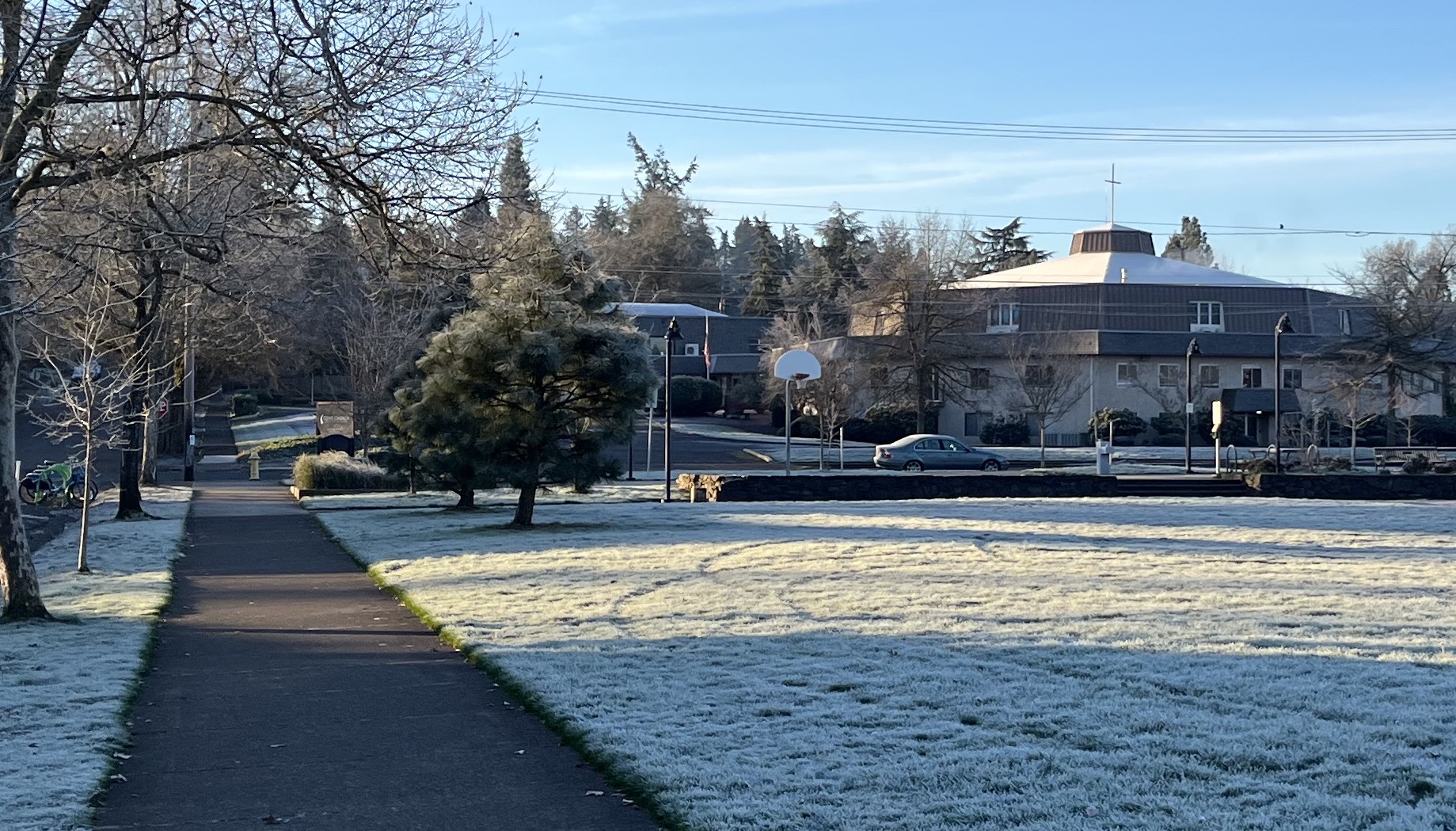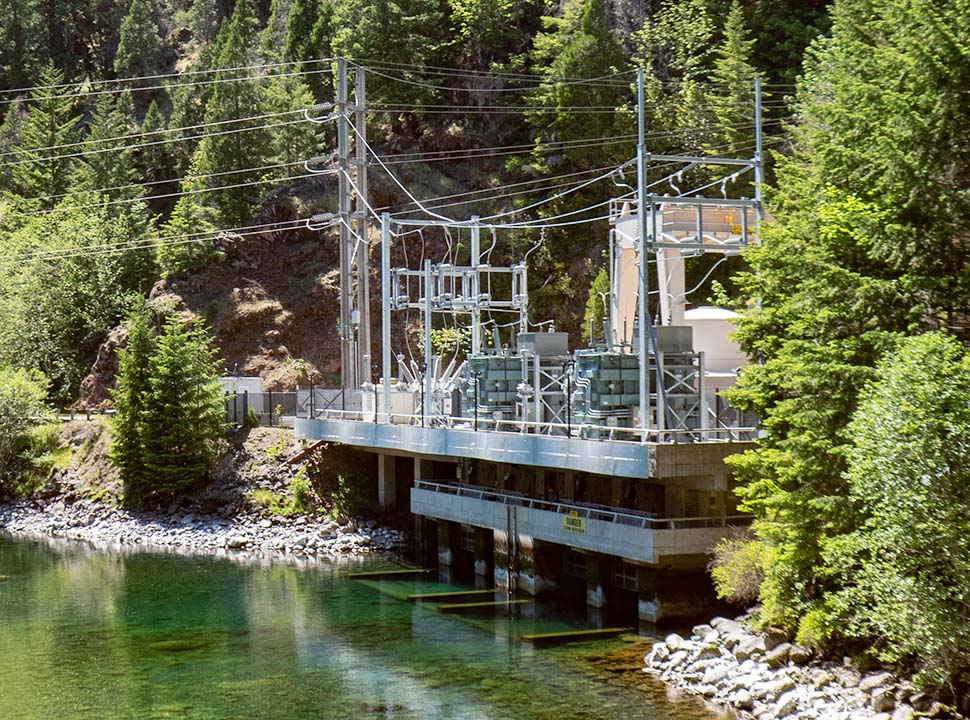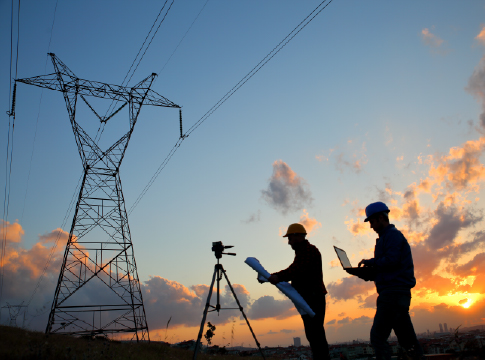Related News
Related News
-
Sustainability Snapshot - Celebrating Energy Efficiency Projects in the Community
Sustainability Snapshops highlight impactful projects completed by EWEB's Customer Solutions department, as a way to celebrate the meaningful work happening behind the scenes.
Find Out More -
McKenzie Valley electric service territory realignment study reaches key milestone
EWEB Commissioners approved a resolution authorizing the General Manager to negotiate and execute agreements with Lane Electric Cooperative regarding a potential realignment of electric service territory in the McKenzie Valley at the Board’s December meeting.
Find Out More -
EWEB secures $2.5 billion of reliable, affordable, carbon-free energy for customers
The new contract with EWEB’s largest energy supplier, the Bonneville Power Administration, forms the foundation of a diverse energy portfolio.
Find Out More -
Women in STEM: Meet the Hydro Project Engineer Building Habitat for Salmon
EWEB Engineer Associate Val Chang found her way to the McKenzie River from Los Angeles, inspired by heritage trips to the waters of Taiwan and key mentors along the way.
Find Out More -
Public Power Week Poster Contest Winners 2025
The results are in! View the winning posters from EWEB's 2025 Public Power Week Poster Contest.
Find Out More -
EWEB Hometown Heroes compete internationally
Out of 290 teams from 14 different countries, EWEB's Lineman Rodeo team places in the top third of competitors.
Find Out More -
EWEB's Halloween Truck-or-Treat is a huge success
Community members are accustomed to spotting EWEB trucks around Eugene streets and neighborhoods. But last week, those familiar vehicles looked a little different. At EWEB's second annual Truck-or-Treat Customer and Crew Appreciation Event, our fleet transformed into a festive Halloween spectacle.
Find Out More -
Let's Talk Turkey. Is your family ready for winter?
We're heading into the holidays, but that also means snow, ice, and not-so-nice weather might be in the forecast. Here are some tips to prepare in advance.
Find Out More -
Vote for your favorite Public Power Week Posters
The top five submittals will receive awards. Help us pick the winners.
Find Out More -
EWEB Hosts Annual Spill Drill to Protect McKenzie River
EWEB led emergency responders in its annual “spill drill” on the McKenzie River on Wednesday, Oct. 15, at the Trail Bridge Campground.
Find Out More -
Electric Projects underway in North & South Eugene
Underground lines and disaster-resilient power poles are part of EWEB’s infrastructure upgrade near Eugene’s largest natural resource area.
Find Out More -
EWEB general manager to retire in 2026
EWEB launches nationwide search for next leader to continue the progress of the last decade and ensure a smooth transition.
Find Out More -
The Bonneville Power Administration Rate Change and Your EWEB Bill
BPA’s finalized rate increase is smaller than projected, and EWEB’s pass-through adjustment effective October 1, 2025 will now be 2.7% for residential customers—down from the anticipated 4%.
Find Out More -
Quartz Creek: Setting the Stage for Floodplain Restoration
The project resets the floodplain along 1.8 miles of a formerly channelized creek to improve water quality, fish habitat and natural disaster resiliency.
Find Out More -
You can’t predict the next disaster, but you can prepare
The earthquake lasted less than a minute. But now the power’s out. The tap runs dry. Cell service is spotty. Would you be ready?
Find Out More - Show More
Frigid weather drives highest energy demand of the winter so far
January 28, 2025 • Aaron Orlowski, EWEB Communications

The sub-freezing overnight low temperatures in January led to the highest energy demand so far this winter as electric heaters across Eugene struggle to keep homes and businesses warm.
Demand for electricity in EWEB's service territory hit this winter’s the highest levels yet on the morning of Tuesday, Jan. 28 at 8 a.m., when overall demand hit 475 megawatts. That day, low temperatures skimmed 20 degrees F in Eugene.
That level surpassed the demand on Monday, Jan. 27, when demand hit 469 megawatts, even though Mondays often bring higher demand as managers of commercial buildings reheat them after turning down thermostats over the weekend.
Surging electricity demand during this cold snap is a powerful reminder that in the Pacific Northwest, when temperatures fall, demand for electricity rises. In EWEB’s service territory, winter electricity demand surpasses summer demand because roughly three-quarters of homes have electric heating, while air conditioning is less common.
This season’s peak winter demand is higher than during last year’s notorious ice storm, when demand for EWEB’s electricity peaked at 448 megawatts on Jan. 12, 2024. During the ice storm, the power outages caused by the storm’s damage to EWEB’s electric distribution counteracted some of temperature-induced demand.
Peaks in the mid-400s are high, but still within normal levels for cold winter days. In the last five years, the highest electricity demand occurred on Feb. 23, 2022, when demand hit 483 megawatts at 8 a.m. That day, the overnight low temperature descended to 22 degrees.
But even that level of demand is well below EWEB’s all-time record, which took place on Dec. 9, 2013, when temperatures plummeted to -10 degrees F. That morning at 9 a.m., EWEB customers were consuming 557 megawatts of electricity, as heaters worked full-bore to keep homes warm.
“This cold spell – and every cold spell, including last year’s ice storm – shows us the inextricable link between weather and both energy demand and supply,” said Brian Booth, EWEB’s chief energy resources officer. “EWEB’s energy team is always assessing electricity demand and supply as we look ahead hours, days, weeks, months, years and decades. Our job is to keep the power flowing, no matter what Mother Nature throws at us.”
In the years ahead, as more and more customers electrify their heating systems, demand for electricity during cold snaps will only grow. EWEB predicts that energy demand will rise by 8% over the next decade, as more and more customers swap out their gas-powered cars for electric vehicles, and as industrial demand rises.
“These cold events test the reliability of our region’s energy supply,” Booth said. “To maintain the momentum of our region’s transition from burning coal and gas to relying on clean electricity, we need to keep that electricity reliable, whatever it takes. Without reliable electricity, people won’t switch to electric vehicles or electric heat pumps because of fear the power will go out when they need it.”
EWEB is studying options to bolster future energy supply.
To ensure EWEB continues to have a reliable, affordable and environmentally responsible supply of electricity for decades to come, the customer-owned utility conducts long-term energy supply planning.
In 2023, EWEB published its first such study in a decade. EWEB concluded that the foundation of EWEB’s energy supply should continue to be the Bonneville Power Administration (BPA), a federal agency that sells power from dams on the Columbia and Snake Rivers. But BPA is changing the energy “products” that it offers, and EWEB will need to choose a new one in 2025.
So, for the last year, EWEB has conducted analysis to see which of the new products best meets the utility’s energy needs. Regardless of which product EWEB chooses, the utility will use a combination of its own resources and BPA energy product to meet customers’ needs and contribute towards overall grid reliability.
The crux of the decision comes down to who will meet the energy needs of EWEB’s customers on the highest demand days for the next 20 years. Those peak demand days typically coincide with the coldest days of the year.
BPA offers different levels of service to utilities like EWEB. In essence, EWEB must choose how it will meet peak demand: The utility can either take a do-it-yourself approach or rely on BPA.
One option is for EWEB to pay BPA a premium to always meet EWEB’s peak demand, no matter how high it gets. The other option is for EWEB to continue meet its own peaks, while paying a lower price for the other energy that BPA sells.
“Hydropower from BPA is the foundation of our energy supply portfolio and will continue to be as long as BPA maintains its position as a cost-effective provider of carbon-free power from the federal hydropower system,” said Ben Ulrich, the lead energy resource analyst who is overseeing the study of the BPA product options. “But we have a nuanced, difficult choice to make about how we will rely on BPA to help provide electricity for customers during those moments of extremely high demand.”
Related Programs
EWEB’s Integrated Resource Plan (IRP) will analyze possible energy resource portfolios with a goal of creating useful insights for long-term (20-year) electricity supply planning decisions.




